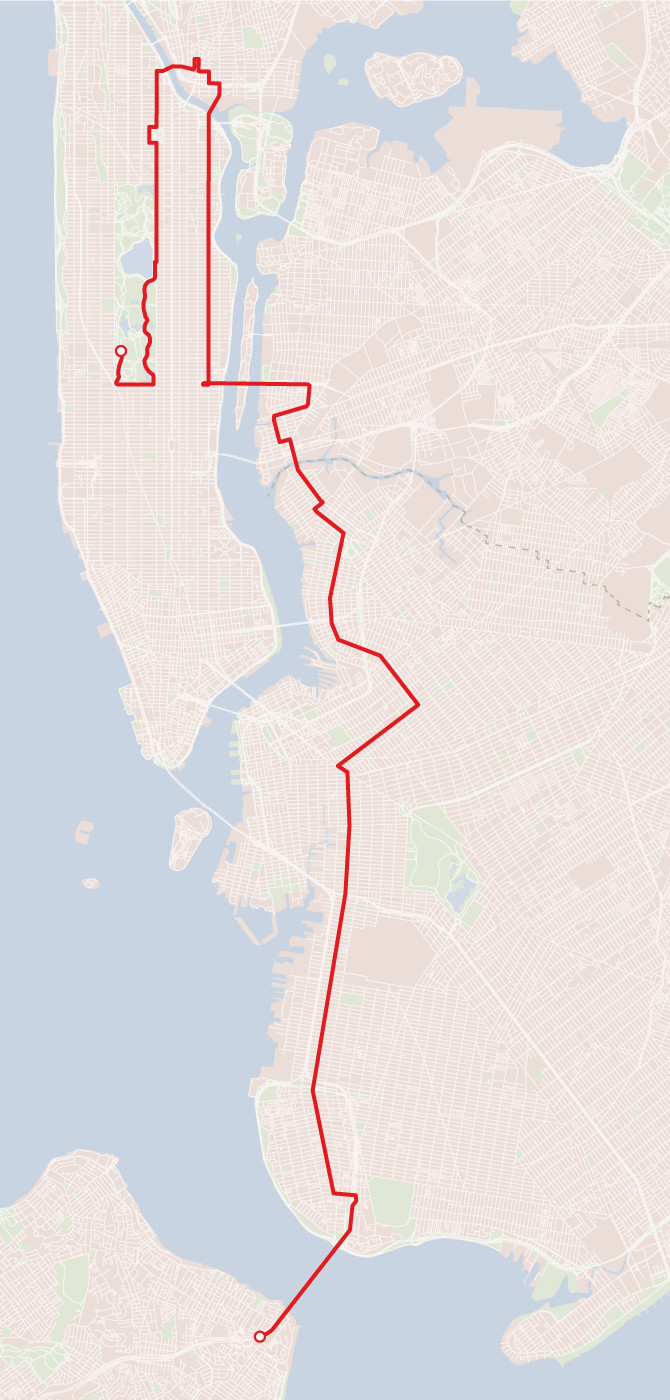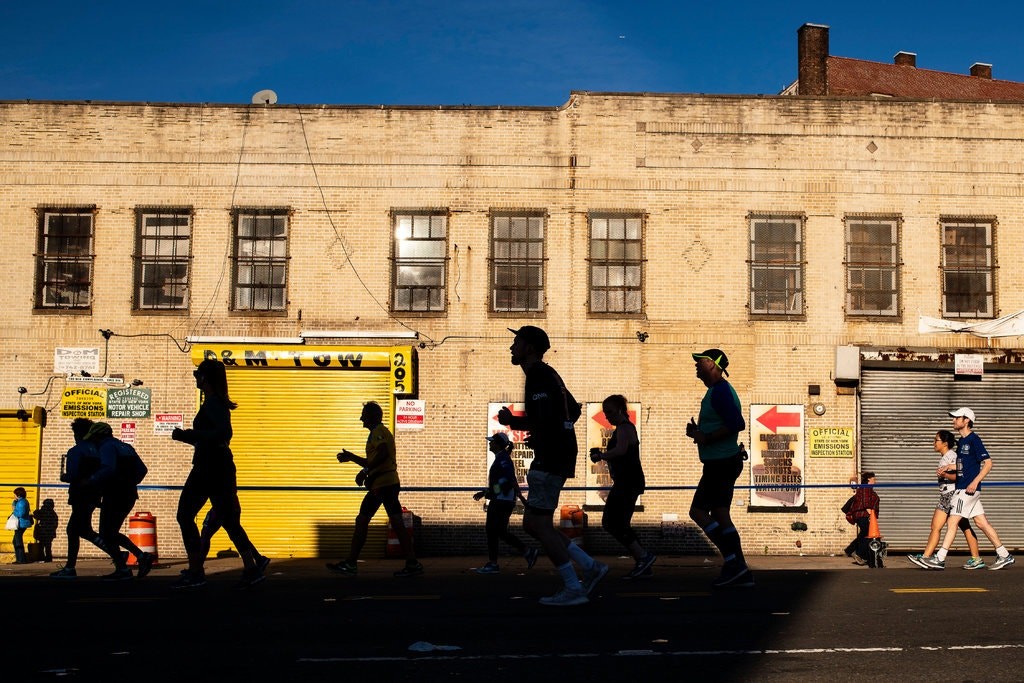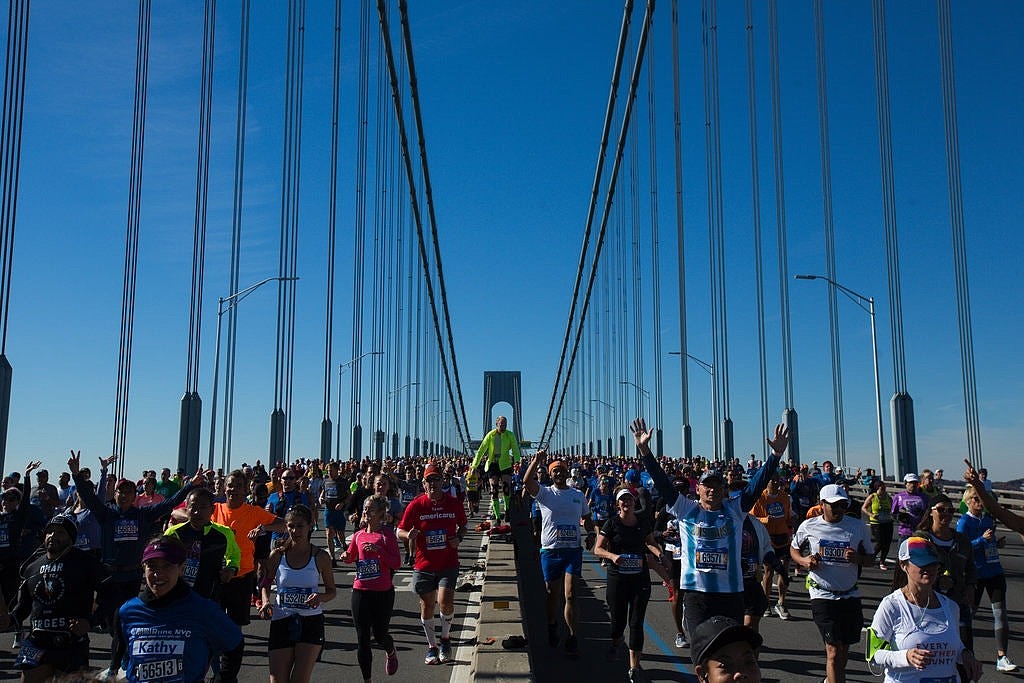Running News Daily
Running News Daily is edited by Bob Anderson. Send your news items to bob@mybestruns.com Advertising opportunities available. Train the Kenyan Way at KATA Kenya and Portugal owned and operated by Bob Anderson. Be sure to catch our movie A Long Run the movie KATA Running Camps and KATA Potato Farms - 31 now open in Kenya! https://kata.ke/
Index to Daily Posts · Sign Up For Updates · Run The World Feed
The Best Places to Watch the New York City Marathon
With 26.2 miles stretching across the five boroughs, the marathon route provides no shortage of spots to root on fatigued runners. Here’s a guide to the top places.
The places where runners need you most

The New York City course is set apart from other marathons in part because of the five bridges that carry runners between boroughs. The bridges are deceivingly tough hills, made trickier by their exposure to the wind and, because they are devoid of spectators, their relative silence.
So, when runners get back on land, it helps to have a boost from a raucous crowd.
“Between the solitude and the challenge that a bridge brings, getting to the other side and seeing people or hearing people cheer is really special,” Mr. Capiraso said.
That support is particularly crucial toward the start of the race, after runners descend from the Verrazzano-Narrows Bridge and head onto Fourth Avenue in Bay Ridge, Brooklyn.
At that point, runners will have completed a two-mile stretch including a steep hill. By cheering there, you’ll keep them buoyant in the face of the daunting miles ahead.
“The Verrazzano bridge is beautiful and iconic, but there aren’t people cheering on it,” Mr. Capiraso said. “So, when you get to Brooklyn, it’s a great cheering zone.”
If you want to be particularly inspiring, travel toward the 20-mile mark, where marathon runners often experience “the wall,” a challenging period when energy wanes.

To help racers push through, head toward East 138th Street in the Bronx, a relatively short stretch of the race, or to Marcus Garvey Park in Harlem, which runners divert around before heading down Fifth Avenue toward the finish line.
Both locations also tend to be less crowded than the miles that follow, making it more likely that you’ll see a particular runner you’re pulling for.The places where the party is
The streets of New York are always lively, but the marathon brings a particularly energetic atmosphere. People crowd the sidewalks with signs, ring bells for hours and play music for both the runners and the crowd.
st Church, where congregants spill out of morning services to serenade marathon participants.
In the second half of the course, runners are met with another burst of sound on First Avenue in Manhattan, between 59th and 96th Streets.
Near 59th Street, marathoners who just finished scaling a challenging and quiet hill on the Queensboro Bridge are greeted with a cacophony of people screaming at runners, clanging noisemakers and banging drums.
The sidewalks here are generally clogged (though they thin out as the race heads uptown). But the energy is so high that it can carry runners as some of them start to hit the wall.
The places where you won’t have to log too many miles
For many city residents, the race winds through their neighborhoods. If you’re one of them, consider staying put.
“If the marathon runs through your neighborhood, your local place is always great,” Mr. Capiraso said. “Because you know the area, and you’ll know the people around.”
The course also has a number of subway stations along the route, a boon for those who need to travel to spots on the course. Notably, the R train runs under the course on Fourth Avenue in Brooklyn, which makes for easy spectating in an early stretch where runners are still plenty enthused.
The sidewalks nearest to subway stations, however, tend to be the most crowded. So, if you’re trying to see a specific runner at a specific spot, give yourself extra time to get settled.
You’ll also want to check with runners about their start time. The first athletes cross the start line at 8:30 a.m., but the last wave of runners won’t begin the race until 11 a.m.
Login to leave a comment
TCS New York City Marathon
The first New York City Marathon, organized in 1970 by Fred Lebow and Vince Chiappetta, was held entirely in Central Park. Of 127 entrants, only 55 men finished; the sole female entrant dropped out due to illness. Winners were given inexpensive wristwatches and recycled baseball and bowling trophies. The entry fee was $1 and the total event budget...
more...




